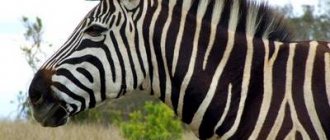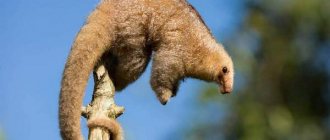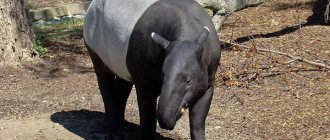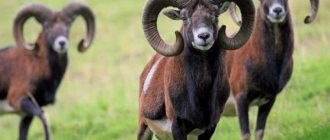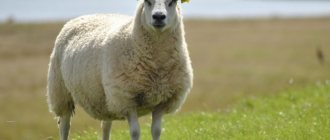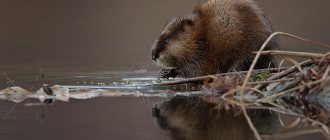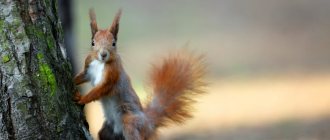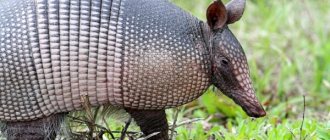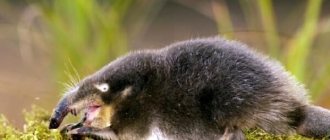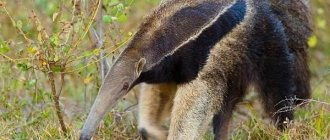The Fossa is a large predatory animal that belongs to the Madagascar civet family. On the island of Madagascar, this animal is the largest and most dangerous predator. The aborigines are confident that fossas are capable of killing a person; in addition, the animals destroy farmsteads.
Local residents exterminate predators and even eat their meat. So, despite the fact that Fossa has no natural enemies due to its large size, its numbers are greatly influenced by cruel human intervention.
Description and features
One species found only in Madagascar is the fossa . It is the largest land predator on the island, weighing up to 10 kg. However, there may be animals whose weight reaches 12 kg. The relatives that preceded this species are the giant fossas. They were much larger in size. All other signs are the same.
The appearance of this rare animal is extraordinary. The muzzle is somewhat reminiscent of a puma. Its hunting habits are most similar to those of a cat. It also moves flexibly through trees and meows. He steps with his paw completely, like a bear. Although he is not related to any of them.
It has a dense and elongated body shape with a small face on which there are long antennae. The height is close to the size of a spaniel. The eyes are large and round, decorated with black eyeliner. Which makes them more expressive. The ears are round in shape and quite large. The animal's tail is as long as its body. Covered with short and dense hair.
The legs are long, but at the same time massive. Moreover, the front ones are much shorter than the rear ones. This helps to increase the running speed of the fossa and always emerge victorious in a mortal fight. The paw pads have almost no hair covering. She moves so secretly and very quickly that it can be difficult to track.
Often has a rusty-brown color, and it is distinguished by a varied shade along the entire length of the body. In the head part the color is brighter. Sometimes there are individuals with a light gray tint on the back and belly. Black is much less common.
Fossa has anal and sebaceous glands that secrete a brightly colored secretion with a strong specific odor. There is an opinion among local residents that he is capable of killing his victims. Males are always larger than females. The latter are endowed with a feature that can no longer be found in any other animal.
During puberty, the female's genitals become male-like and an orange fluid begins to be produced. But these transformations disappear by the age of four, when the body adjusts to fertilization, thus nature protects female fossas from early mating.
Animals have perfectly developed:
- hearing;
- vision;
- sense of smell.
They can make different sounds - sometimes they growl, meow or snort, imitating an aggressive cat purr. Attracting other individuals is carried out using a high and long screech. The animal's meat is considered edible, but local residents rarely consume it.
Lemurs
Lemurs are primates that look like animals similar to dogs, cats and squirrels. They exhibit incredibly unique and exciting behavior, including singing sounds reminiscent of whales. Today in Madagascar there are more than thirty species of lemurs, ranging in size from the 25 g dwarf mouse lemur to the largest indri lemur weighing over 12 kg. Lemurs are one of the most endangered animals on the entire planet, and according to the IUCN Red List, they are considered critically endangered, with 22 species critically endangered; 48 species are endangered and 20 are vulnerable.
Kinds
Until recently, the predatory mammal was classified as a member of the cat family. After careful study, it was classified as a member of the Madagascar civet family, subfamily Fossidae. The predator has related roots with the mongoose.
However, if you look at the photo of the fossa , you can see that the animal looks like a lioness. It is no coincidence that the aborigines living on the island call it the Madagascar lion. There are no separate types of fossa.
Fossa is a large predatory animal of Madagascar
There is probably no person who does not know the popular cartoon “Madagascar”. In this fascinating story, the lemurs living on the island were terrified to the point of losing consciousness at the mere mention of a terrible beast called the fossa. This is not a fictional creature at all, as you now know, the fossa is an animal that really lives on the island of Madagascar. The predator, which is quite large in size, is, of course, capable of scaring not only defenseless lemurs, but also people. In its natural environment, you can see such a formidable beast only in Madagascar. This most beautiful corner of the earth surprises us with both its flora and its fauna.
Lifestyle
Fossa lives only in the wooded areas of the island, sometimes entering the savanna. The Madagascar predator for the most part leads a solitary lifestyle on the ground, with the exception of the mating season. However, often in pursuit of prey it can deftly climb a tree.
The animal moves quickly, jumping like a squirrel from branch to branch. He is helped in this by his long, thick tail, which, together with his flexible body, acts as a balancer. And also strong and dense paws with very mobile joints and sharp claws.
The hermit does not establish a permanent lair for himself. More often the fossa lives in a cave, dug hole or under an old stump. He knows his territory well and does not allow strangers into it. Marks its place around the perimeter with a deadly smell. Sometimes it covers an area of up to 15 kilometers. Sometimes, when taking a break from hunting, it can hide in a tree fork or hollow.
It can camouflage well due to the peculiarities of its color, which allows it to blend in with the color of the savannah. Fossas are also excellent swimmers, able to quickly and deftly catch up with their prey in the water. This makes it easier to find prey and helps to escape from enemies.
Striped tenrec
The striped tenrec is common in the lowland tropical forests of northern and eastern Madagascar. The animal has a long pointed snout, vestigial tail and limbs. The muzzle is black with yellow stripes, and the body is covered with spines. The striped tenrec is active both during the day and at night and feeds mainly on insects. The long muzzle is designed mainly for digging in the ground in search of prey. They can also feed on worms, small fish and even frogs. Tenrecs mainly breed in October and December depending on the availability of food. The gestation period is 58 days and the female can give birth to up to eight cubs. The species is of least concern.
Nutrition
By nature, the Fossa animal is an unsurpassed hunter and a ferocious carnivorous predator that attacks animals and birds. Thanks to its sharp fangs and powerful jaw, it can deal with them instantly. Not wanting to share the prey, he always hunts alone. The predator's diet is varied, it can be:
- wild boars;
- mice;
- fish;
- lemurs;
- birds;
- reptiles.
The most desirable prey for him is the lemur. There are more than 30 species of them on the island. But, if the lemur cannot be caught, it can snack on smaller animals or catch insects. He also loves to eat chicken and often steals it from local residents. If the animal manages to catch the prey, it firmly grasps it with its front paws and at the same time tears the back of the victim’s head with its sharp fangs, leaving it no chance.
The cunning predator often attacks from ambush, tracking for a long time and waiting in a secluded place. Can easily deal with prey that weighs the same. It is famous for the fact that, due to its bloodthirstiness, it often kills more animals than it can eat. In order to restore strength after a tiring hunt, fossams only need a few minutes.
They are ready to lead an active lifestyle around the clock. However, they prefer to hunt at night and during the day rest or sleep in a den hidden in a dense forest. They look for their prey all over the island: in tropical forests, bushes, and fields. In search of food, they can enter the savannah, but avoid mountainous areas.
Tomato frog
Also known as tomato narrowmouth frogs, these frogs are found only in Madagascar, mainly in the northwestern part of the island. As a rule, they lead a terrestrial lifestyle and are common in forested areas. Due to deforestation, their habitat has been destroyed, but they appear to adapt well to changed conditions and can be found in gardens and plantations.
There are three species of tomato frogs: Dazzophus antongilli, Dyscophus guineti and Dyscophus insularis. Of the three, D.antogilli is endangered due to deforestation and trapping for keeping as pets. These frogs mate during the rainy season, in shallow, slow-moving water. They are brightly colored and can secrete a nasty substance when threatened, although it is not toxic but can irritate the mucous membrane.
Reproduction
For the Fossa, the mating season begins in the fall. At this time, animals are very aggressive and dangerous. They are not able to monitor their behavior and can attack a person. Before the start of the mating season, the female emits a strong foul odor, which attracts males. At this time, she may be surrounded by more than four males.
Fights begin between them. They bite, hit each other, growl and make threatening sounds. The female sits on a tree, watches and waits for the winner. She chooses the strongest from the environment to mate, but sometimes she may prefer several males.
The winner climbs up her tree. But if she doesn’t like the male, she won’t allow him. Raising the tail, turning her back and protruding her genitals is a sign that the female has accepted him. Mating in the Fossa lasts about three hours and takes place on a tree. The mating process is similar to the actions of dogs: biting, licking, grumbling. The difference is that for the latter it happens on earth.
After one female's estrus period ends, other females who are in estrus take her place on the tree. As a rule, for each male there are several partners who may be suitable for him to mate with. Some males may go off on their own to search for a female.
Mating games can last a week. A pregnant fossa itself looks for a safe place to hide and gives birth to several babies three months after conception. This occurs during the winter period (December-January).
She is also raising them alone. There are up to four cubs in one litter. They are very similar to kittens: small, blind and helpless, with a body covered with fine fluff. Weight is about 100 grams. Other representatives of the viverrid species give birth to only one baby.
Fossa feeds the cubs with milk for up to four months, although from the very first months there is complementary feeding with meat. Babies open their eyes after two weeks. At two months they are already able to climb trees, and at four months they begin to hunt.
Until the predators have grown up, they look for prey together with their mother, who teaches the cubs hunting skills. At one and a half years old, fossa babies leave home and live separately. But only after reaching four years old do they become adults. Cubs left without mother's protection are hunted by snakes, birds of prey, and sometimes Nile crocodiles.
Red foodie
Also called the Madagascar fody, this bird is native to Madagascar and other nearby islands such as the Comoros, Seychelles and Mauritius, and the species has recently been found as far away as the Arabian Peninsula. They grow to about 12.5-13.5 cm and weigh about 14-19 g. Males have bright plumage on the chest and head, while the wings, tail and eye area have dark feathers. The plumage varies widely from orange to yellowish, and during breeding the males molt and become olive-brown like the females. The species is least endangered.
Lifespan
The lifespan of the animal in natural conditions is up to 16–20 years. According to reports, the oldest animal died at 23 years old. In captivity, it can live up to 20 years. Today, there are about two thousand Foss left on the island and their numbers are rapidly declining.
The main reason contributing to the decline in numbers is thoughtless and evil destruction by people. An attack by a predator on domestic animals causes hostility among the local population. The natives unite several times a year to hunt together and mercilessly exterminate them. This is how they take out their anger for stealing pets.
In order to lure a cunning animal into a trap, they often use a live rooster tied by the leg. The Fossa has only one defense against humans, like a skunk - a stinking stream. Under her tail there are glands with a specific liquid that emit a strong stench.
Other reasons contributing to their extinction include exposure to infectious diseases that can be transmitted through consumption of pets. This has a detrimental effect on them. The forests where lemurs live, which are the main food for fossas, are also being cut down.
Panther chameleon
The panther chameleon is endemic to Madagascar and other nearby islands. It has the most variety of colors of any chameleon and is most sought after by reptile traders. Like other chameleons, the panther chameleon has a raised nape. When hunting, it uses its tongue with a suction cup at the end. This species is least endangered.
Madagascar little grebe
This waterfowl lives only on Madagascar's largest lake, Aloutra. The body length of the little grebe is 22-27 cm, weight is about 150 g. It has a thin beak. Male grebes are noticeably larger than females and usually have a longer bill. These birds feed on insects, fish, and crustaceans. They nest in colonies, sometimes up to 150 individuals. The Madagascar little grebe's nest is a floating platform of aquatic plants.
The Madagascar little grebe is a species listed in the International Red Book and has the status of “vulnerable”.
flying fox
This is a representative of the bat genus of the fruit bat family. She looks like a huge bat. The body length of the flying fox is about 40 cm, and its wingspan reaches 1.8 m. In addition to Madagascar, this strange creature is found in Indonesia, Papua New Guinea and Australia. The flying fox differs from other bats in that it does not use echolocation, but uses normal hearing. These animals do not need echolocation, since they do not catch insects, but feed on plant foods - fruits, flowers and leaves.
Share link
Matriarchy
The Madagascan name for the ring-tailed lemur is maki.
Ring-tailed lemurs lead a social lifestyle. They live in groups of 20 to 30 individuals. There is a strict hierarchy within the groups, and the leaders are females. They have preferential rights in choosing food and a partner. While females usually remain in the groups they were born into, males repeatedly move to new ones. Ring-tailed lemurs love to sit in the sun and enjoy the warmth, spreading their paws to the sides.
Green dove
The plumage of these birds is green with an olive or yellowish tint. They live in forests, nesting in the crowns of trees. Green pigeons feed on tree fruits and juicy fruits, swallowing them whole. They fly very quickly, deftly maneuvering between branches. When flying, they make characteristic whistling sounds, for which they are sometimes called whistling pigeons.
